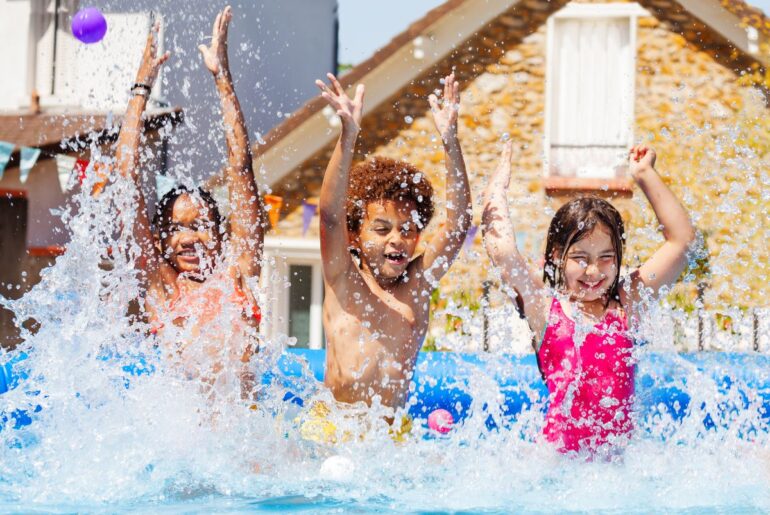The sun is shining and temps are rising, signaling the welcome return of swim season and summer fun. As families prepare for refreshing pool days and beach outings, it’s also the perfect time to revisit water safety practices.
While water activities offer wonderful opportunities for physical activity and family bonding, they also require the proper precautions. Swimming skills and water safety awareness are essential for kids of all ages, especially considering that water-related accidents remain a significant concern for young children between ages 1 and 4. By implementing the necessary safety measures and helping your child develop confidence in the water, you can ensure that the whole family has plenty of fun in the sun — while staying safe.
Drowning is a silent danger
It’s important to know that drowning typically isn’t a dramatic event — on the contrary, it can be quiet with no splashing, yelling or waving, and can occur in under a minute. Even more disconcerting, 88 percent of child drownings happen with at least one adult present, which proves that it can be easy to overlook the signs that someone is in trouble. Taking the following steps can drastically lower the risk of drowning —
Enroll your child in swim lessons so they can learn these five basic water safety skills:
- Step or jump into water over their head and return to the surface.
- How to turn around in the water and orient themselves to safety.
- Float or tread water.
- Combine breathing with forward movement in the water.
- How to safely exit the water.
Always watch kids when they are in or around water, with no distractions. Very young and inexperienced swimmers should always be within arm’s length of an adult at all times. Older kids who are more experienced should still have a swim buddy.
Empty tubs, containers, and kiddie pools immediately after use. Young children can drown in as little as one inch of water — unattended water vessels should be drained and stored away.
If you are a pool owner, install a fence. A pool fence should surround all sides of the pool and be at least four feet tall with self-closing and self-latching gates.
Pick the right color for your child’s swimsuit. The color of your child’s bathing suit can make them easier or harder to spot in the water. Check out our guide to the safest swimwear colors for your child’s water adventures.
Learn CPR and basic water rescue skills. See where you can take a local CPR safety class in your area — it’s a skill set that is valuable for every parent and caregiver.
With these proactive approaches, your family can fully embrace the joy of swimming while ensuring everyone stays safe during water adventures all year round.







